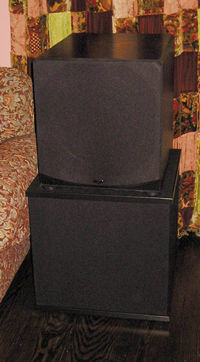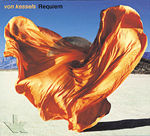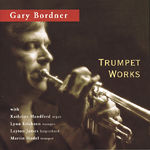| Columns Retired Columns & Blogs |
Music in the Round #7 Page 2
With Trinaural, the performers were more coherently present in the center of the soundstage, and seemed to have greater depth as well as more discrete layering from front to back (or, in multichannel terms, from front to farther in front). I have yet to hear a two-channel recording in which the integrity of an ensemble was not as good as or better when subjected to Trinaural processing. I can say as much for good multichannel recordings with a discrete center signal, but my "old" two-channel recordings couldn't get there without the Trinaural.
Overall, the Trinaural processor significantly improved most recordings while enhancing the spatial presentation, and had no real deficiencies.
Another fundamental adjustment
I'm a bit of a bass freak. While I resisted it in my stereo system, I like having a good subwoofer in my multichannel system, and Outlaw's ICBM Bass Manager and Paradigm's Servo-15 subwoofer provide the underpinning I need. The sticky issue is correct placement, and that is constrained by choices of furniture and décor. When I installed the Servo-15, I briefly tried only one or two other spots before ending up with the sub just to the left of the couch. The fact that level settings for the sub are quite critical suggests to me that this spot is less than ideal, but I had little choice.
While surfing the Web and musing about subwoofer isolation and supports, Acoustic Sciences Corp. sent me an e-mail about their new SubTrap, a type of Tube Trap designed to fit beneath a subwoofer and thus solve many of the problems encountered in real listening rooms. When placed on a SubTrap, a subwoofer is physically decoupled from the floor and mechanical feedback is minimized. Well, that hasn't been a problem for me, except when I jack the levels way up. However, the SubTrap is also designed to attack acoustic problems caused by the interactions of a subwoofer's output and the room's modes.
 First, with a typical ceiling height of 8', the mode is at 70Hz. Simple equalization can reduce the magnitude of the system response at that frequency, but can't easily correct for the storage and release of energy over time, which leads to imprecise and inarticulate bass at and around 70Hz. Second, the common and obvious placement of a subwoofer on the floor puts it in a high-pressure zone—a room boundary where it more effectively loads and is affected by the modal resonance. The SubTrap targets both of these issues by providing ample energy absorption in the 70Hz range, more or less like one of ASC's traditional Tube Traps, and by raising the sub above the floor boundary.
First, with a typical ceiling height of 8', the mode is at 70Hz. Simple equalization can reduce the magnitude of the system response at that frequency, but can't easily correct for the storage and release of energy over time, which leads to imprecise and inarticulate bass at and around 70Hz. Second, the common and obvious placement of a subwoofer on the floor puts it in a high-pressure zone—a room boundary where it more effectively loads and is affected by the modal resonance. The SubTrap targets both of these issues by providing ample energy absorption in the 70Hz range, more or less like one of ASC's traditional Tube Traps, and by raising the sub above the floor boundary.
I had misgivings. A SubTrap is one big, chunky black box—stacking my sub on top of it created a monumental black tower that loomed over the listening position like one of those monoliths from 2001: A Space Odyssey. But it worked like magic. As soon as I'd set it up, it was obvious that the room acoustics had changed for the better. There was less apparent energy from clapping, loud conversation, or just stomping around. When I turned on the system, there was also less apparent bass energy from all widerange signals, even with the sub disconnected! Clearly, the SubTrap was minimizing the excitation of these room modes. I say "modes" because my multichannel room measures 16' by 16' by 8' (I know, I know...not room dimensions anyone would choose from scratch for audio reproduvtion), which means that the 70Hz trap was working on the fundamental of the major mode for the height, and the first harmonic of the major mode for the length and width.
 With the SubTrap-stacked Servo-15 back in play, the bass was transformed. I thought I'd had it pretty good before, but now there was more bass detail, and so much deeper than I expected. In fact, I had to rebalance the subwoofer levels; pre-SubTrap, my ears and my SPL meter had been deceived by the encumbered resonances. With the true bass levels restored (and my wife outside in the garden), I unleashed my inner bass freak with Von Kessel's Requiem (SACD, VK3583). This disc has lots of spacey synthesizer sounds compounded with assorted percussion (especially gongs!), but track 2, aptly titled "From DC to 60Hz Ahmmm," was particularly powerful. The combo of Servo-15 and SubTrap filled the room with throbbing, tuneful bass that moved me, but not the floorboards or the furniture. Ah, yes—glorious bass without the boom!
With the SubTrap-stacked Servo-15 back in play, the bass was transformed. I thought I'd had it pretty good before, but now there was more bass detail, and so much deeper than I expected. In fact, I had to rebalance the subwoofer levels; pre-SubTrap, my ears and my SPL meter had been deceived by the encumbered resonances. With the true bass levels restored (and my wife outside in the garden), I unleashed my inner bass freak with Von Kessel's Requiem (SACD, VK3583). This disc has lots of spacey synthesizer sounds compounded with assorted percussion (especially gongs!), but track 2, aptly titled "From DC to 60Hz Ahmmm," was particularly powerful. The combo of Servo-15 and SubTrap filled the room with throbbing, tuneful bass that moved me, but not the floorboards or the furniture. Ah, yes—glorious bass without the boom!
 With acoustic music, things were even better. Gary Border's Trumpet Works (SACD, Artegra ART1001) is a collection of solo and concerted performances, beautifully recorded with different collaborators in different venues. On the opening solo, recorded in the Cathedral of St. Paul (Minnesota), I could hear the huge space of the cathedral, unencumbered by the modes of my room. On other tracks, where Border's trumpet is accompanied by an organ, the fundamentals had a discreteness of tone that was new in this listening room.
With acoustic music, things were even better. Gary Border's Trumpet Works (SACD, Artegra ART1001) is a collection of solo and concerted performances, beautifully recorded with different collaborators in different venues. On the opening solo, recorded in the Cathedral of St. Paul (Minnesota), I could hear the huge space of the cathedral, unencumbered by the modes of my room. On other tracks, where Border's trumpet is accompanied by an organ, the fundamentals had a discreteness of tone that was new in this listening room.
Figuring merely to sample Gregorio Paniagua's familiar La Folia in its new multichannel version (SACD, Harmonia Mundi HMC 801050), I was (sub)trapped by the natural ambience, startling transients, and incisive percussion revealed by the removal of the room's signature. I sat riveted in my seat for the whole disc. If you liked the original La Folia CD (or LP!) and you now have a multichannel system, you must get this SACD. I swear I could almost smell the little bus on the final cut.
The SubTrap is available in three sizes (15", 18", or 22" square) from ASC dealers. The ASC website offers some guidance in selection, relating the choice to subwoofer bandwidth and room dimensions. At ASC's suggestion, and to fit the Servo-15's dimensions, I went with the 22"-square model ($438).
I now face a serious disagreement with my wife re. the appearance of the room. Unless your room is fortuitously dimensioned or otherwise treated, you, too, may have some serious domestic discussions ahead of you. But most of us with subwoofers will just have to have a SubTrap.
Fuel on the flames
A while back, we reported that Naxos had begun to offer releases on SACD as well as on DVD-Audio. When asked why, label head Klaus Heymann replied: "From the very beginning, I opted for DVD-A because it is the better surround format, and because there are zillions of DVD-V players installed in houses but only thousands of SACD players. DVD-A will win, but in the meantime there is an SACD market, especially in Asia, that we cannot ignore, which is why we will also release new blockbuster titles on SACD."
Whether you agree or not with Heymann, many of us like having albums in duplicate formats. But unless they're completely parallel productions, with no differences in the mastering, we gain little insight into the formats' different sonic characteristics. However, while each Naxos DVD-A indicates how it was recorded and mixed (eg, "48kHz, 24-bit resolution"), the companion SACD gives only recording date and venue. Thus, despite the SACD, DDD, and DSD imprints, I suspect that these SACDs were transferred from PCM masters and are not DSD originals.
I compared several of Naxos' dual issues, playing the SACDs in Sony's XA9000ES and the DVD-As in Arcam's DV-79 (review in process). In each case, I preferred the DVD-A. A great example was Shostakovich's Symphony 7, with Dmitri Yablonsky and the Russian Philharmonic (DVD-A, 5.110020; SACD, 6110020). The DVD-A was more open and detailed, with greater lateral imaging and depth. The SACD seemed weightier, narrower, and a bit darker—but only in direct A/B comparisons with levels carefully matched. This is not to say that Naxos' SACDs are inferior to the competition. Their SACD of Grieg's Piano Concerto and Symphonic Dances (6.110060) is delightful in performance and sound, and the SACD of highlights from Mozart's Le Nozze di Figaro (6.110014) is a sparkler that made me sorry they didn't record the entire opera.
More interesting comparisons loomed with the parallel releases of some of the Vanguard back catalog: on SACD by Artemis, and on DVD-Audio by Silverline. I played Maurice Abravanel's venerable recording of Mahler's Symphony 1 on the Sony and Arcam players mentioned above. Here my preference was decidedly for the SACD, even though, as above, it was darker and narrower in perspective than the DVD-A, and both suffered from occasional and disturbing low-frequency rumbles. Artemis' SACD preserves the 4.0-channel mix of the original recording, and offers more than adequate spaciousness, weight, and detail. Silverline remixed the masters to offer full 5.1 on the DVD-A, and in so doing have given us a diluted, spread-out presentation with thin, wiry strings. In fact, the 4.0 SACD has better center solidity than the DVD-A, with its discrete center channel! Add to that the fact that the Mahler symphony is paired on the two-SACD set with Berlioz' Requiem, which fairly demands the multichannel treatment, and you can easily guess which is the better buy.
Finally, I discovered that I was in possession of no fewer than four multichannel SACD recordings of the orchestral arrangement of Mussorgsky's Pictures at an Exhibition. A shoot-out was inevitable.
The newest 5.1-channel issue is with Theodore Kuchar and the National Symphony of the Ukraine (Naxos 6.110061), which, PCM-derived or not, has a dynamic, full-bodied sound with excellent localization, detail, and balance. It also has a slight excess of reverb, hall or otherwise, and is a little harsh at peak levels.
The 5.0-channel Vanguard/Artemis version, with Sir Charles Mackerras and the New Philharmonia (ATM CD 1504), is fairly dry, with excellent bass and some phasiness in the strings, this so far common to all Vanguard reissues.
Mobile Fidelity's 4.0 remastering of Slatkin and the St. Louis Symphony's recording (UDSACD 4004), originally released on Vox, while more distant than the previous two, has good imaging and superbly balanced sound from all the orchestral groups, but a hint of low-frequency hum when played at realistic levels.
Last up was Sony's 5.0 remastering of an original surround recording with Thomas Schippers and the New York Philharmonic. This was a breath of fresh air. The dynamic and quite forward perspective matched well with the colorful performance to make it my favorite of the four.
- Log in or register to post comments




































